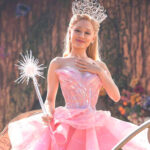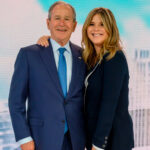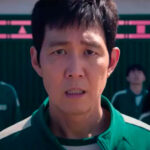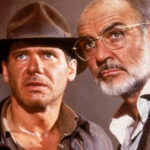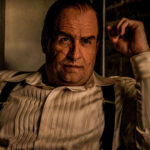

“Who Framed Roger Rabbit”, released in 1988, is a landmark film that revolutionized the animation genre by innovatively mixing animated characters with live-action actors. Directed by Robert Zemeckis and based on Gary K. Wolf’s book, the film stands out for its audacious blending of worlds, bringing to life a universe where humans and animated characters coexist.
The plot revolves around detective Eddie Valiant and his unlikely ally, Roger Rabbit, as they attempt to unravel a complex mystery threatening the peace between the two worlds. In addition to its captivating storyline and irreverent humor, the film is known for its references to animation classics and the collaboration of various animation studios, something unprecedented at the time.
Get ready to dive into the trivia that makes “Who Framed Roger Rabbit” an unforgettable masterpiece!
1 – WHO WAS THE VILLAIN?
As they developed the script, Price and Seaman were undecided about the villain’s identity. They experimented with versions in which Jessica Rabbit or Baby Herman played the role of antagonist.
However, they eventually settled on the newly created character, Judge Doom, who was originally meant to have an animated vulture perched on his shoulder, but this idea was discarded due to technical difficulties.
Doom was also intended to be the hunter who killed Bambi’s mother, but Disney rejected this idea.
2 – THERE WAS TO BE A FUNERAL SCENE
Among the various ideas developed for the plot, there was a planned scene for Marvin Acme’s funeral, which would have featured several iconic characters such as Mickey and Minnie Mouse, Tom and Jerry, Foghorn Leghorn, Mighty Mouse, Popeye, and Olive Oyl, among others. However, this scene was eliminated due to concerns about the pacing of the narrative.
3 – THE TITLE WAS VERY DIFFERENT
Before “Who Framed Roger Rabbit” was chosen as the final title for the film, other names were considered, including “Murder in Toontown”, “Toons”, “Dead Toons Don’t Pay Bills”, “The Toontown Trial”, “Trouble in Toontown” and “Eddie Goes to Toontown”.
4 – SECURING CHARACTER RIGHTS
Spielberg was unable to secure the rights to characters like Popeye, Tom and Jerry, Little Lulu, Casper the Friendly Ghost, and characters from Terrytoons (except Mighty Mouse) in time. However, the producer played a crucial role in convincing Warner Bros. to allow their creations to be used by Disney.
In addition to the $5,000 paid for each character, the film had to meet certain conditions, such as ensuring equal screen time for iconic Warner and Disney characters.
As a result, Bugs Bunny and Daffy Duck share the screen with Mickey Mouse and Donald Duck, ensuring that all characters received the same amount of frames.
5 – PATHEITIC GYMNASTICS
In the film, when Eddie Valiant (Bob Hoskins) recounts his past to Roger, the short film shown is “Pathetic Gymnastics,” which was actually only released in 1949, two years after the period depicted in the story.
The production decided to use this short despite the historical discrepancy because it was considered the “craziest thing” found in Disney’s archives.
6 – LIVING IN THE CHARACTER’S SKIN
During filming, voice actor Charles Fleischer delivered Roger Rabbit’s lines off-camera, staying completely in character. He wore a costume that included bunny ears, yellow gloves, and an orange jumpsuit.
To assist the actors, full-size rubber models were used so that the human actors could visualize the size and shape of the animated character. During breaks in filming, some studio staff commented on the quality of the special effects in the “rabbit movie.”
7 – THE COMPLICATED SPECIAL EFFECTS
During filming, one of the biggest challenges was making the animated characters interact with real objects and actors. The final effect was achieved through two main techniques: some objects, such as Baby Herman’s cigar and the plates Roger smashes on his own head, were moved on set by manually operated machines. In post-production, the characters were drawn over the machines.
The scene in the Ink & Paint Club followed a similar method, with glasses moved by an octopus bartender being controlled like puppets and trays held by penguin waiters attached to sticks. These sticks and wires were removed in editing, and the drawings were added.
For the Toontown sequence, chroma key was used, allowing Bob Hoskins to interact with a world that would be digitally created in post-production. Post-production took 14 months to complete. With 326 animators involved and 82,080 frames of animation created, the film features one of the largest credit sequences of the 1980s.
8 – CREATING ROGER RABBIT
Roger Rabbit is described as having a “Warner face,” “Disney body,” a “Tex Avery attitude,” overalls similar to Goofy’s, gloves inspired by Mickey Mouse, and a bow tie like Daffy’s. Animation director Richard Williams revealed that he based Roger’s model colors on the American flag (red overalls, white body, blue bow tie) with the intention that “everyone would like him subliminally.”
9 – THE ORIGIN OF THE PHRASE “BUMP THE LAMP”
When Eddie takes Roger to the secret bar room to remove the handcuffs, the rabbit bumps into the lamp, causing the chandelier to start swinging. The animators had to work intensively to ensure that the shadows of the real environment matched the shadows of the animation.
Today, the term “Bump the Lamp” is used by many Disney animators to describe the meticulous effort dedicated to animation details, even in aspects that most of the audience might not notice.
10 – CREATING JESSICA RABBIT
Jessica Rabbit combines four femme fatales into one character. Writer Gary K. Wolf drew inspiration from Red, a creation of Tex Avery, when creating Jessica, while animator Richard Williams based her look on Rita Hayworth and Veronica Lake. Additionally, director Robert Zemeckis suggested that Lauren Bacall also influenced the character’s appearance. Kathleen Turner is the actress who provides Jessica Rabbit’s voice.
11 – FORMULAS TO KILL CARTOONS
The three ingredients in the formula that kills cartoons (turpentine, benzene and acetone) are paint solvents, all used to remove animation from frames.
12 – BOB HOSKINS’ SON GOT ANGRY WITH HIM
Bob Hoskins shared that, for two weeks after the film’s release, his son refused to speak to him. When he finally asked why, the child replied that he couldn’t believe his father had worked with animated characters like Bugs Bunny and hadn’t taken him to meet them.
13 – THE DIRECTOR
Robert Zemeckis offered his services as director in 1982, but Disney considered his previous films to be commercial failures and dismissed him.
Terry Gilliam was given the opportunity to direct the film but concluded that the project was technically complex. “Pure laziness on my part,” he later admitted. “I completely regret that decision.” Robert Zemeckis was finally hired in 1985 to direct, based on the success of “Back to the Future”.
14 – BUDGET AND BOX OFFICE
The initial budget planned for the film was $50 million, an amount Disney considered excessive. “Roger Rabbit” only received approval when the budget was reduced to $30 million, still making it the most expensive animated film approved at the time. Jeffrey Katzenberg, president of Walt Disney Studios, believed that the combination of animation and live action could be the solution to revitalizing Disney’s animation department.
It was all worth it, as “Who Framed Roger Rabbit,” besides being considered one of the greatest films in cinema history, also earned an incredible $351 million worldwide.
15 – OSCAR RECOGNITION
“Who Framed Roger Rabbit” won four Academy Awards: Best Film Editing, Best Sound Effects Editing, Best Visual Effects, and a Special Oscar for Richard Williams for creating and directing the animated characters.
“Who Framed Roger Rabbit” is more than just a movie; it’s an innovative work that pushed the boundaries of animation and cinema by combining animated characters with live-action actors. Its success was the result of a unique blend of creativity, technique, and studio collaboration.
From the complexities of interaction between animation and live action to the behind-the-scenes trivia, the film continues to fascinate and inspire. The character choices, animation techniques, and even the stories of the challenges faced during production add layers of depth and richness to the film’s legacy.
“Who Framed Roger Rabbit” remains a cinematic landmark, celebrating the magic of animation and the creative ingenuity that made this impressive fusion of worlds possible.
